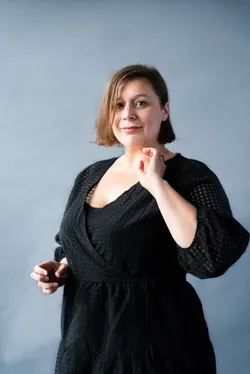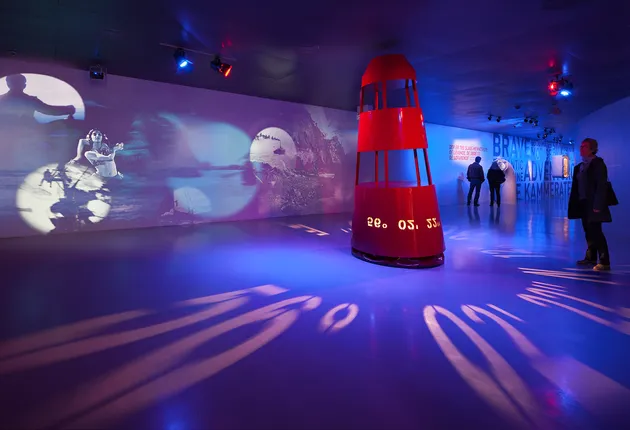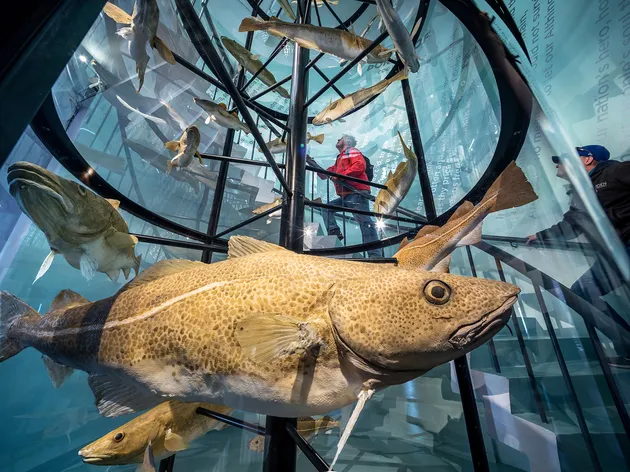BEACHCOMBERS AND SAILORS
Kaap Skil
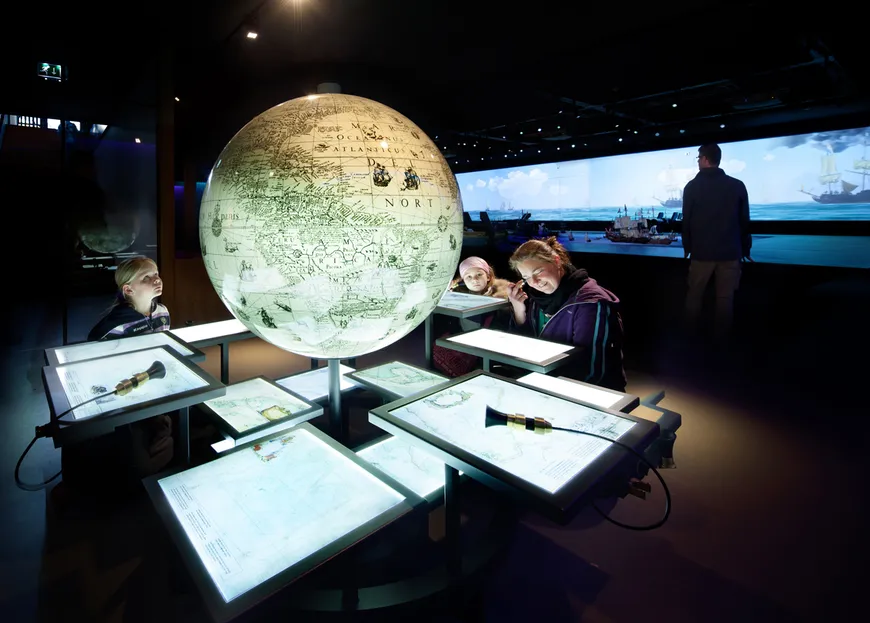
Weinigen kennen de roemruchte VOC-geschiedenis van Texel. In de 17e en 18e eeuw vertrok de vloot van de Verenigde Oost-Indische Compagnie (VOC) vanuit de ankerplaats ‘Reede van Texel’ naar de Oriënt. In die tijd was Texel het Schiphol van Nederland. Deze bijzondere geschiedenis wordt verteld in het nieuwe entreegebouw van ‘KAAP SKIL – museum van jutters & zeelui’. Het door Mecanoo Architecten ontworpen entreegebouw huisvest twee nieuwe tentoonstellingen, een museumcafé en een museumwinkel, allen ontworpen door Kossmanndejong.
- Location
- Oudeschild, Texel (NL)
- Client
- Maritiem & Jutters Museum
- Year
- 2012
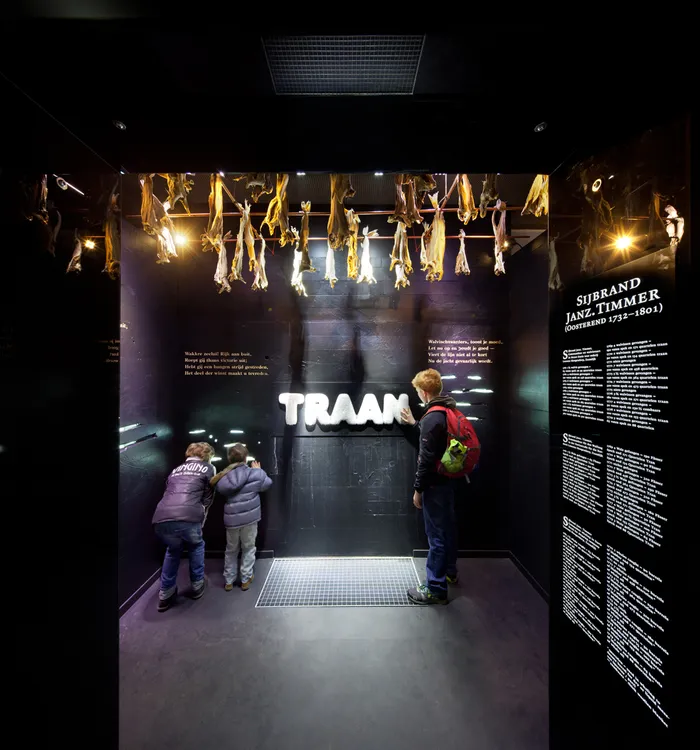
In each of these rooms history is brought to life through a spatial installation or a piece from the collection and by means of a seventeenth-century figure.
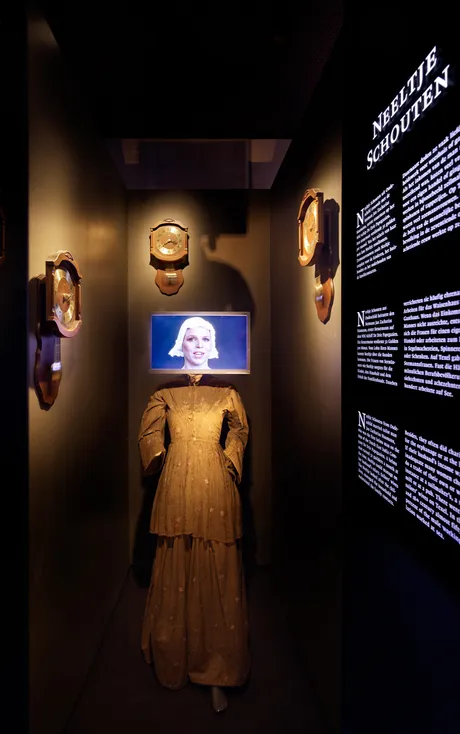
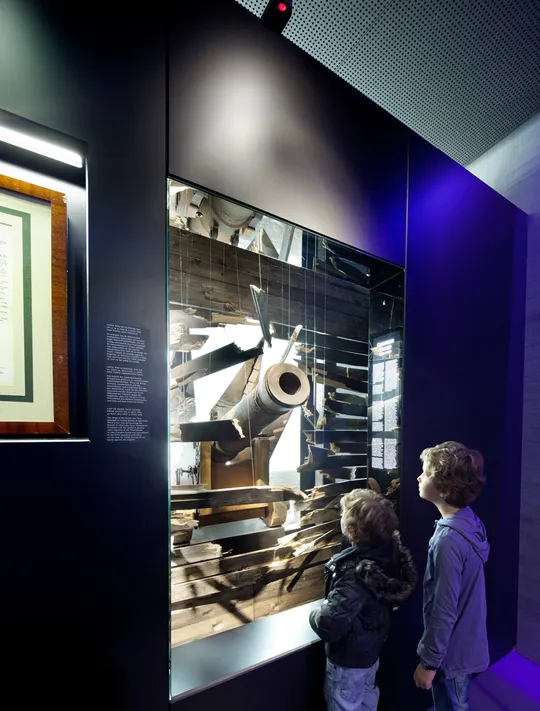
The 'Reede van Texel'
In the new exhibitions the audience is taken to Oudeschild in the Golden Age. The museum’s showpiece is a model of the Reede van Texel of 18 x 4 metres. The model shows in detail the impressive spectacle of hundreds of ships along Texel’s coast. Special viewers allow visitors to zoom in on these scenes, and show exciting animations. Animated scenes from seventeenth-century paintings, projected onto a twenty-metre-long wall behind the model, show a glimpse of what the rhythm of day and night was like during life at sea. Nine rooms of discovery take the visitor further along into the Dock’s world. In each of these rooms history is brought to life through a spatial installation or a piece from the collection and by means of a seventeenth-century figure.
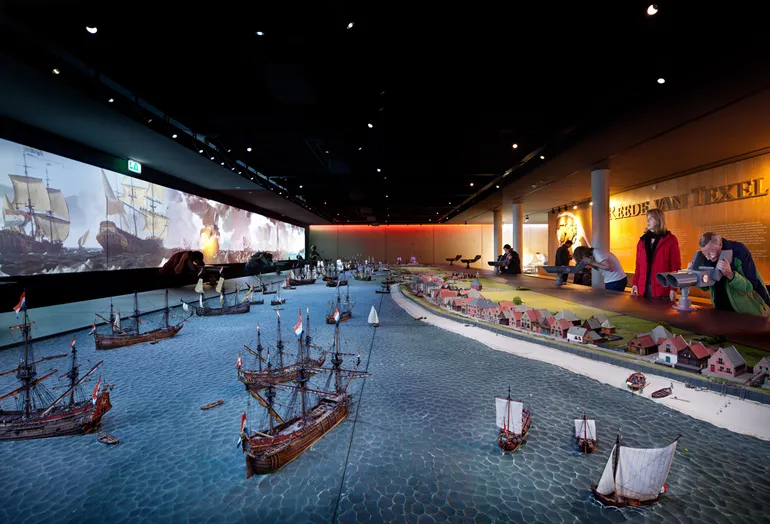
Under water archaelogy
The first floor houses a research laboratory where visitors can admire objects that had been lost, derived from shipwrecks found along Texel’s shores. Innumerable seventeenth- and eighteenth-century objects are displayed thematically, but there is also a showcase that shows all the objects found in one shipwreck. The found objects raise questions about the history of seafaring. By linking the objects to different perspectives, they are put in certain contexts through which they offer us a new point of view on history. The exhibition also offers space for objects found by amateur divers.
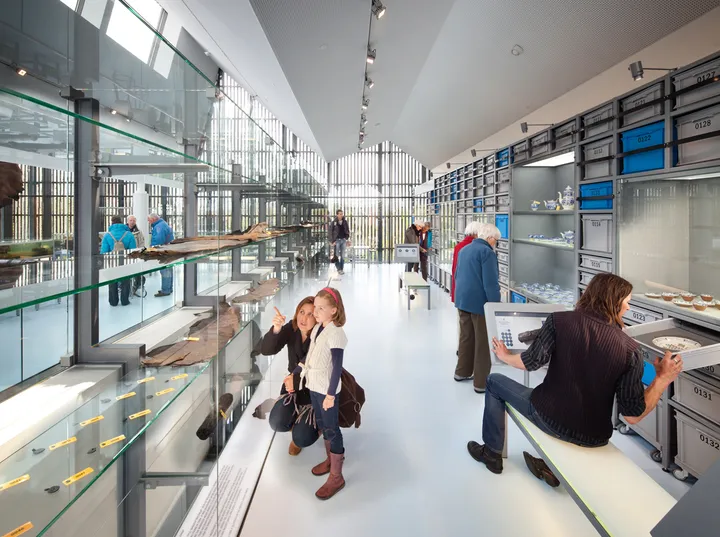
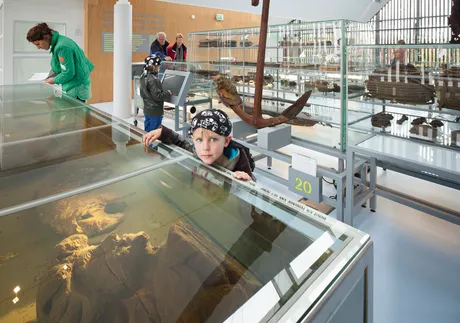
A meeting place
The ground floor houses a museum café and a shop. Alongside having a function for the museum, this space is also a meeting place for Texel’s residents. Because the floor is covered in paving, the space’s open character is emphasised. Thus the street, the museum shop and café and the terrace are interconnected. The layout of the shop reflects that of a contemporary fish auction. Characteristic white and blue fish crates have been integrated in both the counter and the museum shop. Suspended from the ceiling is a large map of Texel, made out of Texel wool. The map, composed of felt and knitted pieces, has been put together by artist Erna van Sambeek in collaboration with various Texel-based women.
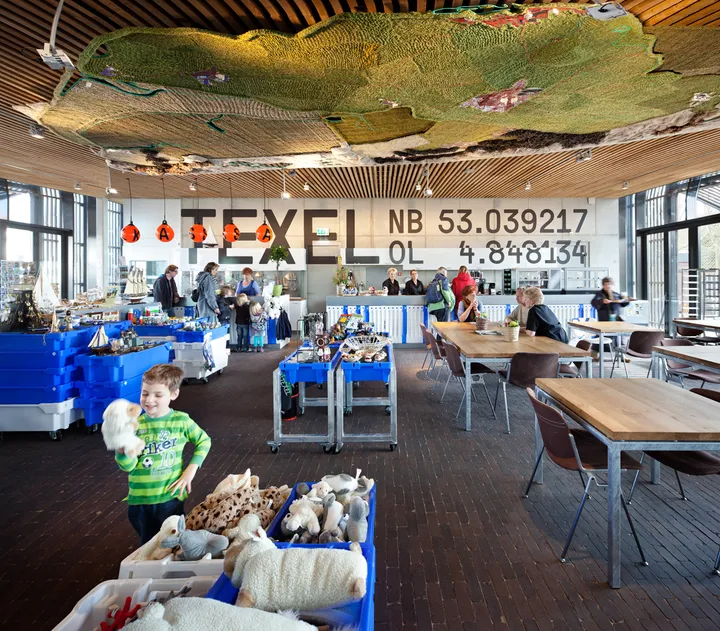
Awards
SBID International Design Awards 2012
- Nominated
FX International Interior Design Awards 2012
- Nominated
Luigi Micheletti Award 2014
- Honorable mention
